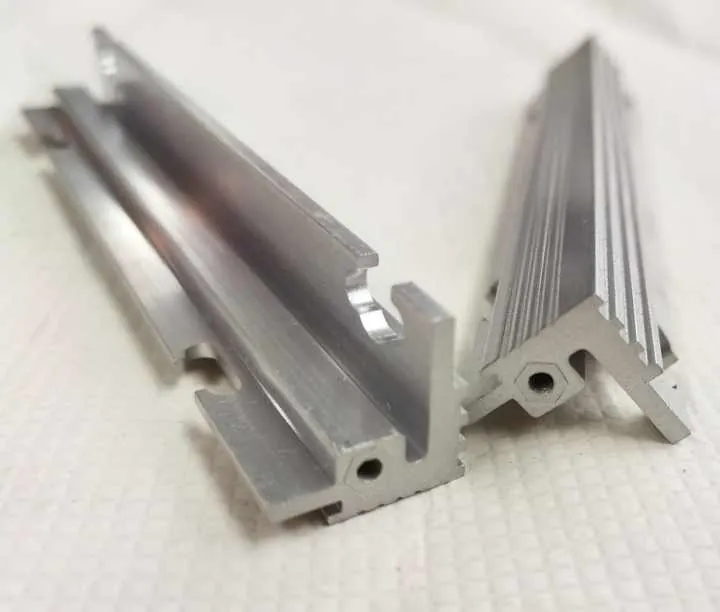How To Choose Aluminum Alloy 6061 or 6063?

Choosing between aluminum alloy 6061 and 6063 can be tricky, especially when both are popular and high-quality.
You can choose between 6061 and 6063 based on strength, corrosion resistance, appearance, and fabrication needs. Each alloy has distinct properties that suit different applications.
When I first worked with these alloys, I thought they were interchangeable. After a few failed fits and surface mismatches, I realized they serve different purposes. Let’s break it down so you can avoid the same mistakes.
What are the strength differences between 6061 and 6063?
Some projects demand high strength, while others prioritize ease of shaping.
6061 aluminum alloy is stronger than 6063, making it more suitable for heavy-duty structural applications, while 6063 is softer and better for complex shapes.

I once built a small frame using 6063, thinking it would be fine. It worked but flexed more than expected. Later, switching to 6061 gave me a frame that felt solid under load.
Tensile and Yield Strength Comparison
| Property | 6061-T6 | 6063-T6 |
|---|---|---|
| Tensile Strength (MPa) | ~290 | ~240 |
| Yield Strength (MPa) | ~240 | ~210 |
| Elongation (%) | 12 | 12 |
While both alloys can handle general-use projects, the extra strength in 6061 can mean fewer worries in high-stress areas. I also noticed that 6061 holds up better to wear and tear when exposed to daily use.
6061 aluminum has a higher tensile strength than 6063.True
6061's tensile strength is about 290 MPa compared to 6063's 240 MPa.
6063 aluminum is stronger than 6061 in most cases.False
6063 has lower tensile and yield strength compared to 6061.
Which alloy offers better corrosion resistance and finish?
If you want your aluminum to stay good-looking for years, this choice matters.
6063 offers better corrosion resistance and a smoother surface finish than 6061, making it ideal for decorative and architectural uses.

In my outdoor projects, I’ve noticed that 6063 weathers better without visible pitting, especially when anodized. Its smoother surface also takes anodizing more evenly, giving a better appearance.
Corrosion Resistance & Surface Finish
| Alloy | Corrosion Resistance | Surface Smoothness | Anodizing Quality |
|---|---|---|---|
| 6061 | Good | Medium | Good |
| 6063 | Excellent | High | Excellent |
For environments with high humidity or salt exposure, like coastal areas, 6063 can keep its look longer. That said, 6061 still performs well if properly treated or coated.
6063 aluminum generally has better corrosion resistance than 6061.True
Its composition and smoother surface make it more resistant to corrosion.
6061 aluminum produces a smoother finish than 6063 when anodized.False
6063 produces a finer, more consistent finish when anodized.
Which alloy suits structural vs decorative uses?
Using the wrong alloy for the wrong job can lead to disappointment.
6061 suits structural applications that require higher strength, while 6063 is better for decorative and architectural profiles.

When I built a pergola frame, I chose 6061 for the load-bearing parts and 6063 for the decorative trim. This combination gave me strength where I needed it and visual appeal where it mattered.
Typical Applications
| Application Type | 6061 Alloy Example Uses | 6063 Alloy Example Uses |
|---|---|---|
| Structural | Aircraft parts, truck frames, load-bearing beams | Window frames, curtain walls, railings |
| Decorative/Architectural | Less common, used with surface finish | Decorative trims, furniture, signage |
Choosing the right alloy for the right part of a project can save time and money. Using 6063 for structure-heavy builds could mean extra reinforcement is needed, while using 6061 for purely decorative pieces could be overkill.
6061 aluminum is better suited for load-bearing structures than 6063.True
Its higher strength makes it suitable for structural applications.
6063 aluminum is mainly used for heavy-duty mechanical parts.False
6063 is more commonly used for decorative and architectural applications.
How do fabrication needs affect alloy choice?
Your choice can also depend on how you plan to cut, bend, or machine the metal.
6063 is easier to extrude and shape into complex profiles, while 6061 machines better and can handle more aggressive fabrication methods.

When I need tight bends or intricate shapes, 6063 is my go-to. For heavy machining, drilling, or milling, I choose 6061. Both alloys weld well, but I find 6063 produces cleaner welds for visible joints.
Fabrication Characteristics
| Fabrication Process | 6061 Performance | 6063 Performance |
|---|---|---|
| Machining | Excellent | Good |
| Extrusion | Good | Excellent |
| Welding | Good | Excellent |
| Bending/Forming | Good | Excellent |
If you are designing a complex decorative frame, 6063 can save you time and cost during production. If you are machining parts for machinery, 6061 is likely the better choice.
6063 aluminum is generally easier to extrude into complex shapes than 6061.True
Its softer composition makes it more suitable for extrusion.
6061 aluminum is preferred for heavy machining compared to 6063.True
It has better machining characteristics and can handle aggressive cutting.
Conclusion
Choosing between 6061 and 6063 aluminum comes down to knowing your project’s demands. 6061 gives you strength for structural work, while 6063 offers better corrosion resistance and finish for decorative use. Match the alloy to your needs, and you’ll get the best performance.


